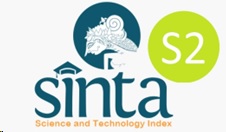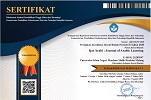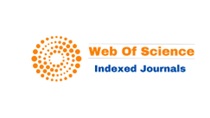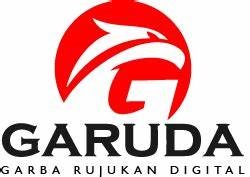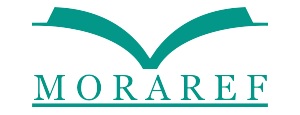The Debate Strategy And Its Contribution To The Arabic Learner’s Competence/ استراتيجيّة المناظرة و اسهامها على كفاءة المتعلّم اللغة العربية
Abstract
Keywords
Full Text:
PDFReferences
Ad-Dhomin, M. (n.d.). Asaasiyaat al-Bahts al-‘Ilmi. Daar al-Masiroh li an-Nashr wa at-Tauzii’.
Ahmad, Tsair., Yusuf Abdul Qodir., & K. M. (n.d.). Al-Bahts an-Nau’I fi at-Tarbiyah wa ‘Ilm al-Nafs. Maktabah al-Mujtama’ al-Arabi.
Al-Assaf, S. ibn A. (n.d.). Al-Madkhlo ila al-Bahts fi al-Uluum as-Sulukiyah. Maktabah Abiikan.
Ar-Rahban, A. (2016). Al-Kifaayah as-Tsaqofiyah fi Ta’lim al-Lughoh al-Arabiyah li an-Nathiqiina bi Ghoiriha “at-Tadris wa Aaliyaat wa at-Taqyiim. Markaz Atsar li Dirosaat al-Arabiyah li an-Nathiqiina bi Ghoiriha.
Burdah, I. (2018). Melejitkan Kemampuan Bahasa Arab Aktif Melalui Strategi Debat. Lisan Arabi.
Byram, M., and K. R. (1999). Language Teach¬ers, Politics and Cultures. Multi¬lingual Matters.
Dimyati dan Mujiono. (2006). Belajar dan Pembelajaran. Rineka Cipta.
Duwaidri, R. W. (2008). Al-Bahts al-‘Ilmi. Daar al-Fikr al-Mu’ashiroh.
Ennis, R. H. (2015). The Nature of Critical Thinking: Outlines of General Critical Thinking Dispositions and Abilities. https://bit.ly/31FDrqR
Fauzan, Abdur Rahman ibn Ibrahim., Muhtar at-Thohir Husain., & M. A. K. M. F. (n.d.). Al-Arabiyatu Baina Yadaik-Silsilah fi Ta’liimi al-Lughoh al-Arabiyah li-Ghoiri an-Natiqiina Biha. al-Arabiyah li al-Jami.
Juliani, Wikanti Iffah dan Widodo, H. (2019). Integrasi Empat Pilar Pendidikan (Unesco)Melalui Pendidikan Holistik Berbasis Karakter Di Smp Muhammadiyah 1 Prambanan. Jurnal Pendidikan Islam UMAHKA, 2(2). https://doi.org/10.22236/jpi.v10i2.3678
Kramsch, C. (1993). Context and Culture in Language Teaching. Oxford University Press.
Kuo, Ming-Mu., & C.-C. L. (2006). Linguistics across Cultures: The Impact of Culture on Second Language Learning. Journal of Foreign Language Instruction.
Mahmud. (2011). Metode Penelitian Pendidikan. Pustaka Setia.
Malham, S. M. (2005). Manahij al-Bahts wa at-Tarbiyah wa ‘Ilm an-Nafs. Daar al-Masiroh li an-Nashr wa at-Tauzii’ wa at Thibaa’ah.
Miles, M B and Huberman, M. (1992). Qualitative Data Analysis : A Sourcebook of New Method. Terjemah oleh Tjetjep Rohendi Rohidi. UI-Press.
Oxford, R. L. (1989). Strategy Inventory of Language Learning (SILL). https://richarddpetty.files.wordpress.com/2010/03/sill-english.pdf
Oxford, R. L. (2003). Language Learning Styles and Strategies: an Overview. GALA.
Queen, S. (2010). Al-Mursyid fi Fanni al-Munaadhoroh, Namuudzaj Buthuulat al-‘Aalam li-Munadhoraat al-Madaris. Terjemah Abdul Jabar as-Syarqi. Mu’assasah Qatar li at-Tarbiyah wa al-‘Ulum wa Tanmiyat al-Mujtama’
Rahyubi, H. (2012). Teori-teori Belajar dan Aplikasi Pembelajaran Motorik: Deskripsi dan Tinjauan Kritis. Nusa Media.
Saahiin, A. H. H. (2010). Istiraatijiyaat at-Tadris al-Mutaqoddamah wa Istiraatijiyaat at-Ta’allum wa Anmaathu at-Ta’allum. Fakultas Tarbiyah Damanhur , Universitas Iskandariyah.
Salami, A. L. (2014). Al-Madkhol ila Fanni al-Munadhoroh. Cet. I. Daar Blumzaburi.
Sapienza Zachary S., Narayanan Iyer., & A. S. V. (2015). Reading Lassweell’s Model of Communication Backward : Three Scholarly Misconceptions. Journals of Mass Communication an Society.
Shoimin, A. (2014). Model Pembelajaran Inovatif dalam Kurikulum 2013. Ar-Ruzz Media.
Sugiyono. (2014). Metodologi Penelitian Pendidikan: Pendekatan Kuantitatif, Kualitatif, dan R&D. Alfabeta.
Sulaiman, M. J. (2017). Al-Ithor al-Marja’I li Mi’yaari al-Kafaa’ah al-Itisholiyah as-Syafawiyah li Daaris al-Lughoh al-Arabiyah an-Nathiqiina bi Ghoiriha fi Dhoui Madkhol Tahlil al-Khitob. Jaamiatu Karaala al-Hindiyah,. https://bit.ly/3vixMDA
Trianto. (2011). Model Pembelajaran Terpadu. PT. Bumi Aksara.
DOI: https://doi.org/10.18860/ijazarabi.v4i3.12306
Refbacks
- There are currently no refbacks.
Copyright (c) 2021 Shofil Fikri, Umi Machmudah, Halimi Halimi, Faisal Mahmoud Adam Ibrahim
License URL: https://creativecommons.org/licenses/by-sa/4.0/





